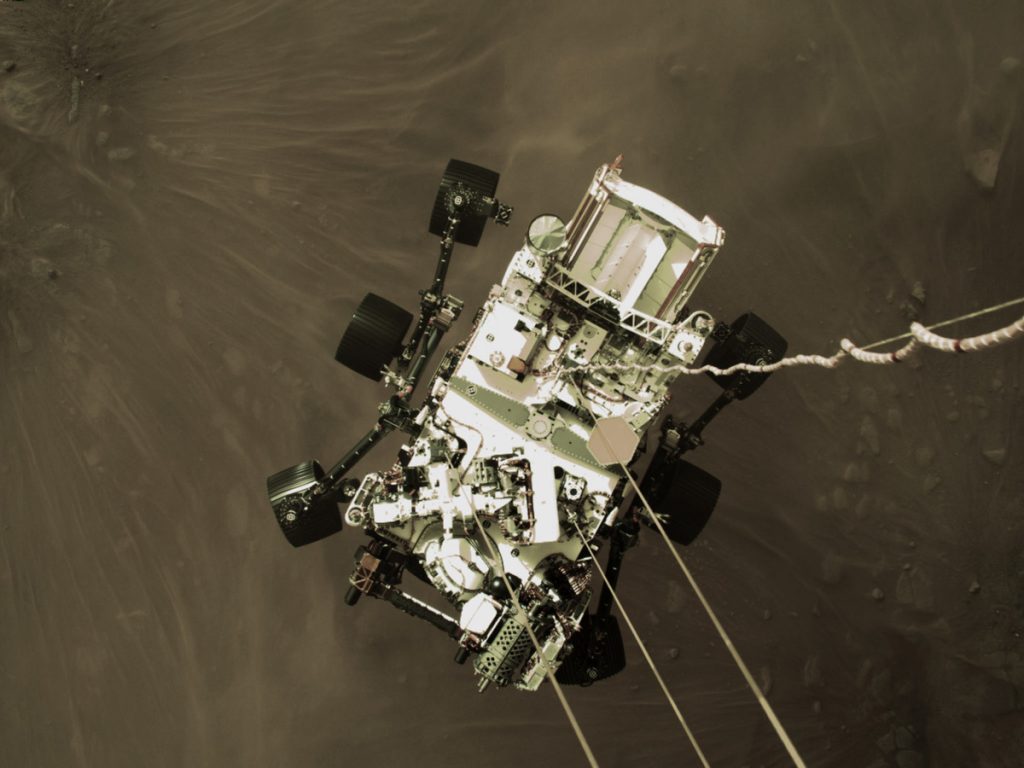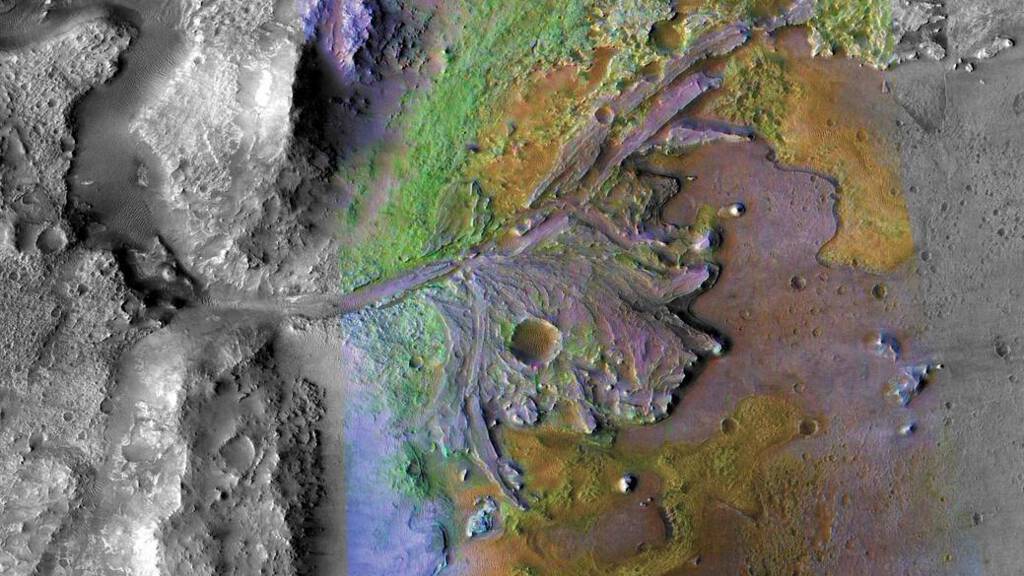Three space probes appeared near Mars this month. The United Arab Emirates sent a weather satellite to spend at least two years mapping the atmosphere and weather around Mars. China also sent a satellite and a rover. That rover will land in about three months. Last week, Mars rover Perseverance landed successfully. It will work on the delta of an ancient river stream in crater Jezero. Dutch researchers are on the tips of their seats to be able to work with the data collected from these missions.

Space probe al-Amal (Arabic for Hope) will observe the atmosphere of Mars. “There are still many things we don’t know about the evolution of the Martian atmosphere,” says Inge Loes ten Kate, astrobiologist at Utrecht University. “That evolution is very interesting because we want to better understand why the Earth is like Earth now, and not like Mars or Venus? In the first hundreds of millions of years, the atmosphere and weather on Mars and Earth were probably much more similar. There is certainly a chance that the Emirates mission will give us new ideas for our Dutch Mars research.”
Mars rover Perseverance is very similar to rover Curiosity, which has been driving around Mars since 2012. So why yet another mission? Ten Kate: “Previous missions have found increasing indications of the possibility of life based on rock analyses. We’ve already found organic material, but that probably came from meteorites. Now we are investigating a new crater, where the conditions for life were probably also very favorable, and we are collecting rock samples that will be retrieved within 10 years for detailed study on Earth.”

Mars and earth were a lot alike
About 3.8 billion years ago, there was a lot of water on Mars, perhaps more than on Earth. Mars was also much warmer and very similar to Earth at that time. During that time, life arose on Earth. If the emergence of life is a “normal” phenomenon that occurs under these conditions, then life may very well have emerged on Mars as well. But what exactly are you looking for? “I don’t think we’ll find life on the surface of Mars. If it is there at all, I expect it to be very deep in the ground,” Ten Kate said. “What we’re looking for now are clues in rocks – minerals and organic molecules. Those might be remnants of past life.”
Maarten Kleinhans is an earth scientist at Utrecht University who specializes in rivers and deltas. He and his team have been studying Mars for years based on satellite photos and comparing the images with rivers and deltas on Earth. “Especially for Perseverance, we looked at the delta in Jezero crater, says Kleinhans. “It is clear after several decades of research that Mars and Earth were very similar in the beginning. Both planets had oceans, rain, groundwater, rivers, erosion and sedimentation. A few hundred deltas formed along the shores of lakes and seas. The bottom of dried-up Lake Jezero could contain traces of life. Much of the bottom is now covered with volcanic ash, however. Even though the river at crater Jezero flowed too short to allow for the emergence of life, the delta may also contain traces of life from older sediment layers (upstream). Those older layers entered the delta as sediment.”
“Mars has largely come to a geological standstill after 500 million years of existence. That sounds like a disadvantage, but it may be an advantage,” Kleinhans says. “Mars and Earth were similar, but on Earth we can hardly find anything from the time when life emerged. Geological processes have recycled rocks from that time. On Mars, that hasn’t happened. That gives researchers a chance to nose around in the remains of the early planet.”

Future Dutch research
Research from Perseverance and al-Amal will provide new knowledge that Dutch researchers can also build on. Better knowledge of the soil and atmosphere will allow researchers like Ten Kate to make better simulations of the Martian soil and weather. “These are important experiments for scientists preparing manned Mars missions. But most of all, it will help us get one step closer to answering the question of whether there was ever life on Mars,” says Ten Kate.
Kleinhans: “Research using satellite photos and river models can be made a lot better with the measurements of Perseverance. So far, assumptions of grain size and layer thickness are used in models of rivers based primarily on knowledge of rivers on Earth. Jezero’s river models will be supplemented with actual sediment properties. I can’t wait to update our models. After that, much more realistic calculations and estimates can be made of rivers on Mars.”



